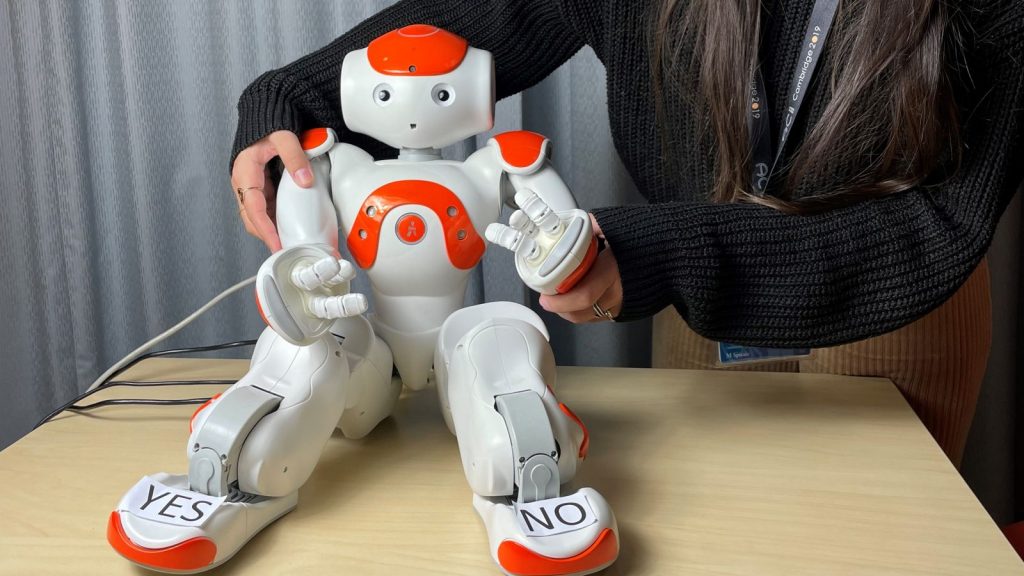Robots could help detect mental wellbeing issues in children
Robots could help to detect mental wellbeing issues in children, a study has suggested.A child-sized humanoid robot was used by Cambridge University researchers to complete a series of questionnaires to assess mental wellbeing with 28 children aged between eight and 13.
The research found that the youngsters were willing to confide in the robot, sometimes sharing information that they had not yet shared via online or during in-person questionnaires.Although the robots are not intended to be used as a substitute for mental health support, researchers say they could be a useful addition to methods of mental health assessment.PhD student Nida Itrat Abbasi, the study’s first author, said: “Since the robot we use is child-sized, and completely non-threatening, children might see the robot as a confidante – they feel like they won’t get into trouble if they share secrets with it.
“Other researchers have found that children are more likely to divulge private information – like that they’re being bullied, for example – to a robot than they would be to an adult.”Each child had a 45-minute, one-to-one session with a Nao robot, which is a humanoid robot around 60cm tall.The children interacted with the robot by speaking with it, or by touching sensors on the robot’s hands and feet. Additional sensors tracked their heartbeat, head and eye movements during the session.Children ‘more engaged’ by robots than screens
Advertisement
Professor Hatice Gunes, who leads the Affective Intelligence and Robotics Laboratory in Cambridge’s Department of Computer Science and Technology, has been studying how socially assistive robots can be used as mental wellbeing coaches for adults.In recent years, she has also been studying how they may benefit children.She said children are “quite tactile” and “drawn to technology”.”If they’re using a screen-based tool, they’re withdrawn from the physical world.”But robots are perfect because they’re in the physical world – they’re more interactive, so the children are more engaged,” she added.

Robots could help to detect mental wellbeing issues in children, a study has suggested.
A child-sized humanoid robot was used by Cambridge University researchers to complete a series of questionnaires to assess mental wellbeing with 28 children aged between eight and 13.
The research found that the youngsters were willing to confide in the robot, sometimes sharing information that they had not yet shared via online or during in-person questionnaires.
Although the robots are not intended to be used as a substitute for mental health support, researchers say they could be a useful addition to methods of mental health assessment.
PhD student Nida Itrat Abbasi, the study’s first author, said: “Since the robot we use is child-sized, and completely non-threatening, children might see the robot as a confidante – they feel like they won’t get into trouble if they share secrets with it.
“Other researchers have found that children are more likely to divulge private information – like that they’re being bullied, for example – to a robot than they would be to an adult.”
Each child had a 45-minute, one-to-one session with a Nao robot, which is a humanoid robot around 60cm tall.
The children interacted with the robot by speaking with it, or by touching sensors on the robot’s hands and feet. Additional sensors tracked their heartbeat, head and eye movements during the session.
Children ‘more engaged’ by robots than screens
Professor Hatice Gunes, who leads the Affective Intelligence and Robotics Laboratory in Cambridge’s Department of Computer Science and Technology, has been studying how socially assistive robots can be used as mental wellbeing coaches for adults.
In recent years, she has also been studying how they may benefit children.
She said children are “quite tactile” and “drawn to technology”.
“If they’re using a screen-based tool, they’re withdrawn from the physical world.
“But robots are perfect because they’re in the physical world – they’re more interactive, so the children are more engaged,” she added.


